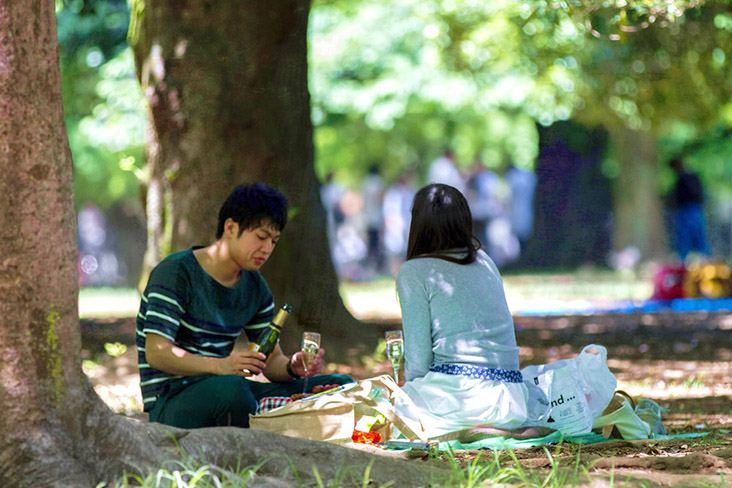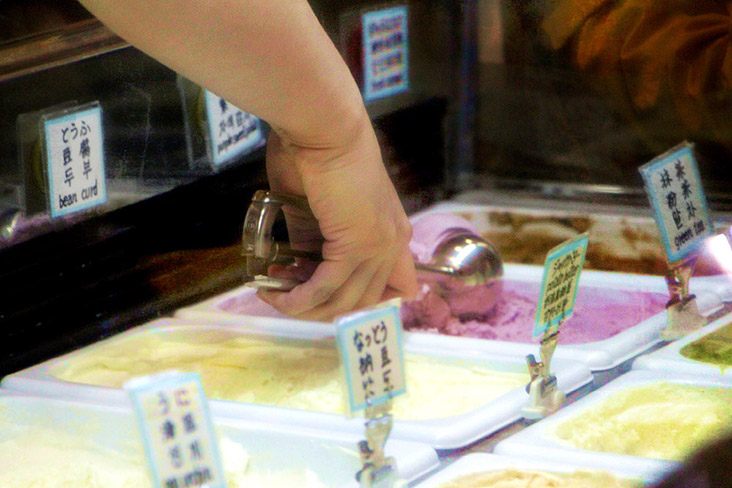OKYO, June 3 — Joie de vivre. It feels odd, almost, to use a French phrase to describe summer in Japan. Yet for those living in the Land of the Rising Sun, that is the season in a nutshell for you: joie de vivre or the “spirited enjoyment of life.”
School is out and parents take their kids out to picnics and bike rides. Urban parks and forests just a little further away with their gentle trails are popular destinations. As are the beaches and the islands: you don’t have to be a surfer to enjoy the sand, sun and the sea.
What makes a Japanese summer so enthralling?
Perhaps it’s the clear blue sky, devoid of any dreary clouds. The warmer weather and the copious amount of sunlight; the longer hours between dawn and dusk. This is enough to make anyone feel more cheerful and raring to go out after the duller, more depressing winter months.
Summertime in Japan or natsu means sunbathing in the parks for some. Time for sun worshippers to get a healthy tan, to say goodbye to the pallor of chillier seasons. Japanese golfers, who infamously make treks to golf courses in more tropical locales, can tee up without travelling afar.
Not everyone enjoys that much sun, of course. For some, summer in Japan means pikunikku or picnics in the shade. After finding a suitable tree to spread their blankets, it’s time to reveal the treasures awaiting inside their picnic baskets: sumptuous bentos from home or the nearest konbini (convenience store) and chilled bottles of beer or sparkling wine.

Summertime is a time to relax and forget the troubles of the world. There will be time enough to return to them wiping away the last crumbs of katsusando (breaded cutlet sandwich).
Perhaps it’s the thrill of getting onto two wheels and exploring the world at your own pace. Cycling is a popular pursuit in Japan, especially in the countryside where you can see fields of gold.
Wheat or corn. Barley or malt. You can always stop and find out. That is the joy of transporting yourself with only muscular effort and curiosity to guide you.
I remember one summer many years ago, going on a cycling trip across the patchwork landscape of Biei, Hokkaido. We pedalled over green hills and past fields of gold. There were rolled bales of hay drying in the sun, rows of flowers in bloom.

Sunflowers and poppies. Marigolds and daisies. A riot of colours.
We weaved in and out. We never knew when we would return; only that we would. So we took it all in.
Perhaps the best thing about summer in Japan is ordering an iced coffee at the end of a bike ride or when the sun is at its highest and most scorching. Sure, there are syrupy sweet smoothies or carbonated soft drinks.
But if you ask a local, they’d tell you the perfect summer thirst quencher is an aisu kohi or iced coffee, especially if the café has a spectacular view. The mountains, the sea. The river and the trees. All shining like precious metal in the noonday glow.

By brewing strong coffee, often dark roast the way the kissatens or coffee houses serve it, directly over ice, you get a beverage that will both cool you down and perk you up from any heat-induced torpor. No languorous afternoon for you, there’s more to experience!
Perhaps it’s the rows of lavender in full bloom at the height of summer.
Though mainly farmed in the cooler climates of Nagano and Hokkaido, rabenda (as lavender is known in Japanese) is a summertime obsession. The varietals of lavender — such as Hanamoiwa, Noushihayazaki and Okamurasaki — intensify from a faint violet blue to a dramatic royal purple.

Lilac-hued blossoms in the shape of whorls speared on cottony spikes; bruise them gently in your hand and they release a divine perfume. This exquisite fragrance will take your breath away and calm your heart, washing all sorrows away.
Perhaps it’s the chance to enjoy a scoop of ice cream, the must-have Japanese summer treat.
What makes ice cream in Japan so special anyway? There is the naturally sweet, farm-fresh milk used to make it. Then there are the unfamiliar flavours (to us non-natives anyway): from delicate sakura (cherry blossom) to juicy masukumeron (muskmelon) to more eclectic concoctions such as umami rich uni (sea urchin) and natto, those infamously slimy fermented soy beans.
Clearly not for every palate, but there is a scoop for everyone. And every scoop promises to ward off the worst of a Japanese summer heatwave, the salt and sweat shimmering on your skin as you gratefully take another lick, and another, until only the ice cream cone is left.

Perhaps it’s simply finally having an excuse to dine al fresco. During summer months, the Japanese get to enjoy their meals outdoors, something they might not fathom in other seasons when the temperatures drop and the wind chill is formidable.
There’s something about twirling some strands of spaghetti slicked with mentaiko (salted pollock roe) cream or tucking into a slice of Margherita pizza fresh out of the oven. (Yes, don’t be surprised to see a multitude of Italian restaurants and cafés in Japan, where pasta and pizzas are beloved, though sometimes tweaked with local ingredients.)
It’s not exactly sun worship, unlike the sunbathers in the park. Dining outdoors is tolerable when one is sitting in the shade, preferably with a view of the streets (such as the pedestrians in Tokyo’s high end Ginza district) or some calming body of water (bistros along the length of the Otaru Canal, for instance).

However the Japanese celebrate the coming of summer, each in their own individual fashion, they all know time is of essence. This, too, shall pass, the adage goes, and how true it is.
Things are rough for so many of us, and there could be tougher days yet. Which is precisely why there is no better time for joie de vivre, for the “spirited enjoyment of life.”
Let us enjoy this now, for seasons will change and summer will be over before we know it. There is only this moment, and thereafter, the memories.
For more slice-of-life stories, visit lifeforbeginners.com.






















